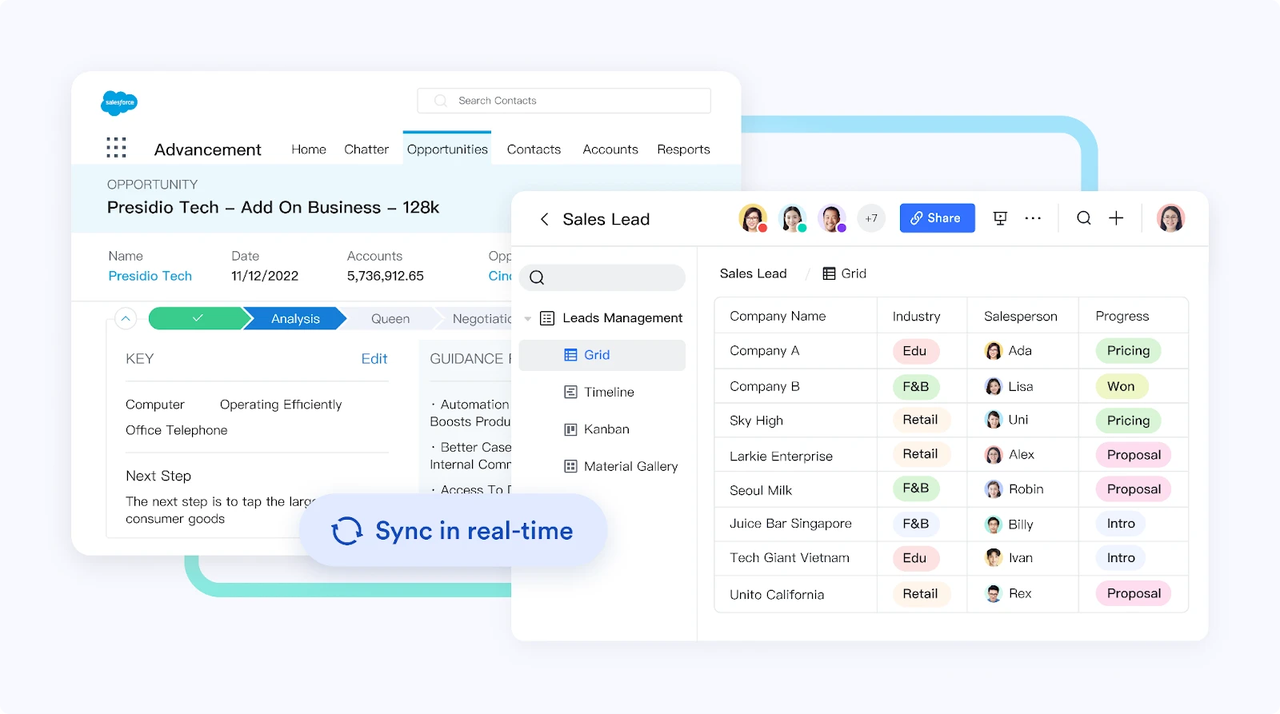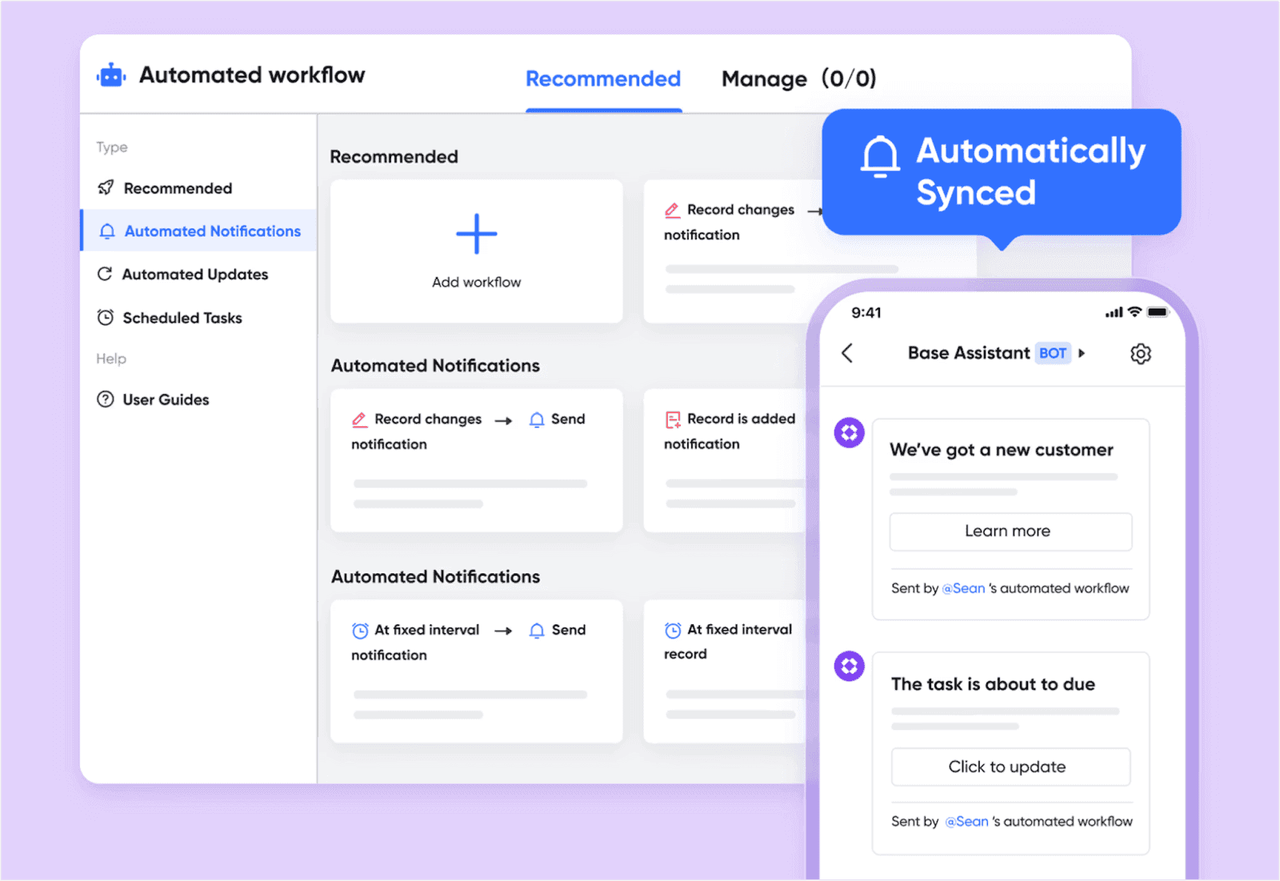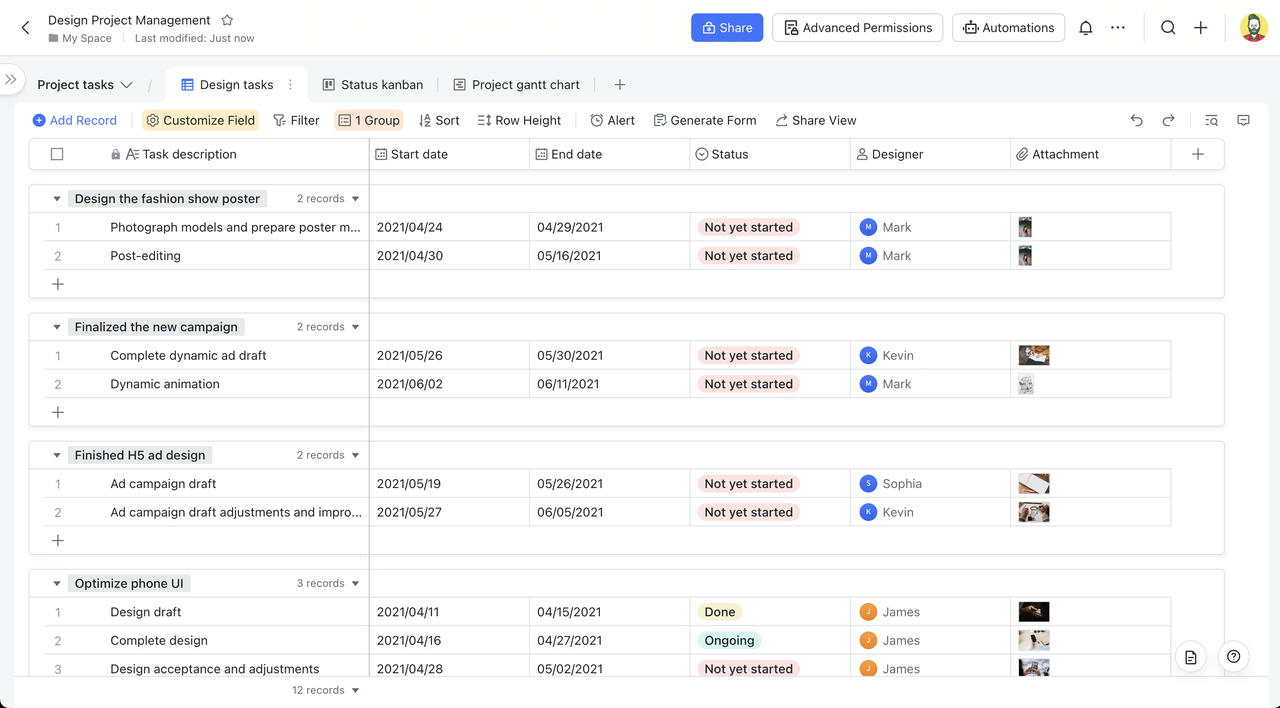Project management is not just “nice to have” – it’s a must-have. Teams need functional, collaborative, and flexible project management tools to keep organized and ensure they meet their deadlines.
As one of such efficient tools, Lark has enabled many businesses to improve the way they manage projects and, as a result, improve productivity, streamline workflows, and improve collaboration.
In this blog, we will take a look at some of the examples of how companies are using project management tools to manage their projects better, automate repetitive tasks, and enhance their business processes.
1. Task management and collaboration: Streamlining operations at a tech startup

A software development startup needed an efficient way to track tasks, allocate time for work, and ensure the team remained aligned. Previously, they relied on a patchwork of emails, spreadsheets, group texts, and various tools, which resulted in communication gaps and delays in project delivery.
Switching to Lark Base, a comprehensive project management platform, enabled them to centralize all project data.
Lark Base allowed project managers to assign tasks with clear deadlines and priorities, while team members could update their progress as needed. This simplified task management and provided full visibility into project statuses.
By combining Lark Base with Lark’s messaging and video conferencing tools, the team improved communication, ensuring everyone stayed informed and on track. For example, when a task was updated or marked as complete, team members received instant notifications, minimizing the risk of miscommunication.
With everything in one place, they could quickly identify issues, share information, and discuss key project changes in real-time. As a result, the team saw a noticeable improvement in project cycle time, with better clarity and enhanced communication.
2. Automating routine processes: A marketing agency’s journey
A mid-sized marketing agency needed a way to automate its approval workflows for content and campaign materials. Previously, the team manually tracked approval requests using email threads, which resulted in delays, lost documents, and missed deadlines.
Now, the case changes. With a few seconds of settings on Lark Base, it helps you build an automated workflow, streamlining processes and reducing manual effort.
According to your configuration, once the draft campaign proposal was ready for approval, Lark sent approval requests to the relevant people. Once they approved the proposal, the next task was triggered, and it flowed to the next stage of approval, all without manual operation.
Larkn Base’s automation feature helped the agency reduce back-and-forth emails and enabled conversations to happen across departments. Automated reminders and notifications assisted the approvals process in running smoothly, so no approvals were missed.
This resulted in a reduction in approval time, which the agency was now able to deliver projects faster without compromising quality.
3. Scaling business operations: A consulting firm’s success story
A growing consulting organization with numerous clients across different industries was finding it very difficult to properly manage its business processes with different teams and departments. Each department independently developed its own systems for identifying clients and tracking contracts, in order to approve deliverables.
Additionally, the lack of a unified environment of business processes was increasingly becoming a severe bottleneck due to the firm’s growth. Projects were being delayed, clients were becoming frustrated, and operational accountability was nonexistent.
With Lark, the business process management software, this firm was able to streamline their business processes and automate workflows.
Lark provided the tools to allow them to create customized workflows for every section of their business, including onboarding clients, sending contracts, following project approval processes, invoicing, etc.
As an example, once a client was onboard, the software triggered a number of tasks for the team, which included establishing the project, identifying and assigning a project manager, and ultimately scheduling a client kickoff meeting.
As a task was completed, the software was updated and team members were notified, therefore allowing them to see the progression of the project in real-time. All of this created more accountability across functional departments, and the firm was able to increase project delivery speed.
Lastly, using the business process management software from Lark, the consulting firm was able to generate reports and watch how efficient each of their workflows was. This allowed them to see exactly where inefficiencies were occurring and eliminate them, boosting productivity.
4. Real-time communication and feedback: A product design team’s experience
A product design team at a global consumer goods company needed a way to collaborate more effectively across time zones. The team was spread across different countries, and delays in communication were causing slowdowns in the design process.
With Lark, the design team was able to communicate seamlessly in real-time, share files with the click of a button, and leave comments for feedback directly on the platform. They utilized Lark real-time chat and video conference to hold virtual meetings and brainstorm new ideas to ensure that the design team was on one page.
Additionally, Lark task management features allowed the team to assign deadlines to each stage of the design process, which meant it was easy to keep the status of the project on track.
Overall, through real-time collaboration, the design team received faster feedback, decreased the number of revisions, and sped up the entire process.
This was ultimately realized reduction in time-to-market as compared to prior years and an improvement to the overall quality of product designs.
5. Business process optimization: A retailer’s journey
Inventory management and order fulfillment were impacting a retail business with several locations across the country.
Their current process of tracking inventory in spreadsheets was ineffective and very error-prone. The retailer needed an improved solution for efficiency in operations and analytical reporting with customer demands.
As the retailer began implementing Lark, it automated the entire inventory tracking, management, and order fulfillment process.
When an online order was placed, the software tracked inventory in an automated manner, enabling the retailer to automate the order fulfillment workflow. Once the order was processed, a notification was sent to the relevant team member(s), and it was shipped with no delay.
The seamless integration of Lark with other business systems and software enabled the retailer to improve efficiencies while eliminating human error from the inventory management process.
The processes that were once key to their operations are now automated, giving them the ability to improve order fulfillment efficiencies, increase customer satisfaction, and drive sales.
Conclusion
Lark has been a welcome addition to companies in many industries. From improving task management, automating approvals, and optimizing business processes, Lark equips companies with the right tools to maximize their productivity and hit their deadlines efficiently.
Examples of companies like the tech company, marketing agency, consulting firm, and retail business illustrate how Lark has enabled organizations to minimize delays, scale their operations, and enhance collaboration, while continuing to achieve success.
With Lark, an all-in-one platform for organizations to utilize, businesses can eliminate inefficiencies, create a more collaborative environment, and deliver projects faster.




